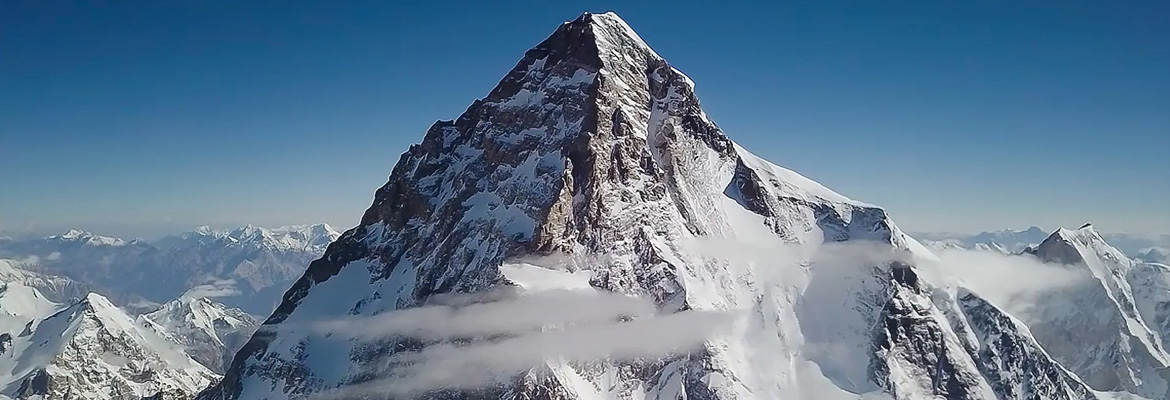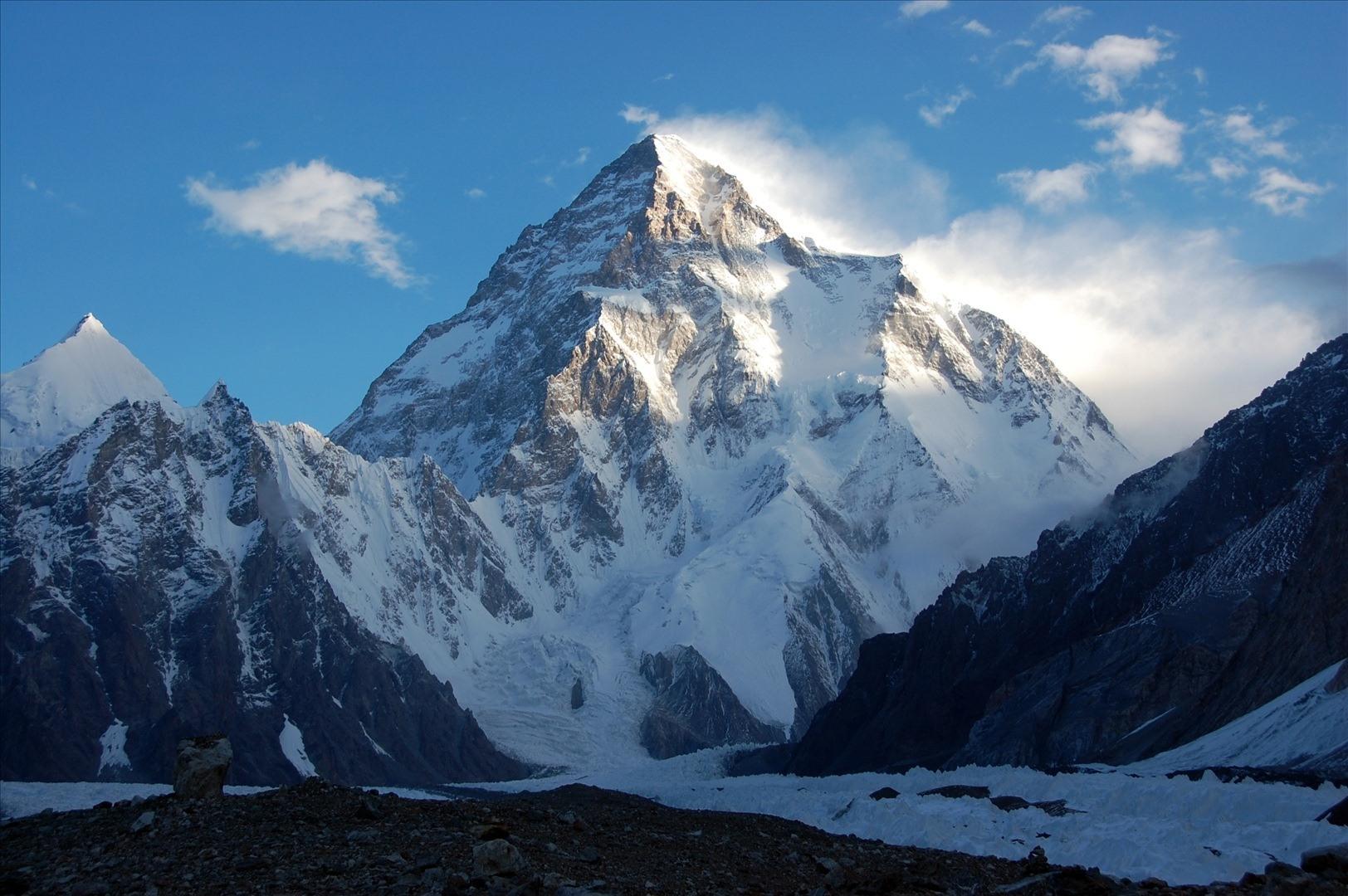Summary of K2 Winter 2021 Thus Far
The traditional mountaineering season on K2 has yet to begin this year, but the infamous mountain has already permeated into the headlines of global media outlets.
A combination of celebration and devastation has both exemplified what mountaineering is all about while also demonstrating the sport’s inherent dangers.
On January 16, a team of 10 Nepalese mountaineers made history by becoming the first climbers to reach the summit of K2 in the winter.
Standing shoulder-to-shoulder, Dawa Tenji Sherpa, Mingma G, Dawa Temba Sherpa, Pem Chiri Sherpa, Mingma David Sherpa, Mingma Tenzi Sherpa, Nirmal Purja, Geljen Sherpa, Kilu Pemba Sherpa and Sona Sherpa stood at the zenith of the world’s second-highest mountain and took in the never-before-seen view of majestic Karakoram Range in the heart of winter.
“The impossible is made possible,” Nimsdai, the nickname of Nirmal Purja, who led one of the expeditions that made it to the top whilst not using any supplemental oxygen on his climb, wrote on Instagram. “At 16:45 hrs local time @nimsdai and team summited K2, teaming up with @mingma.g and team and a member from SST, Sona Sherpa.”
“A very special moment. The whole team waited [10-metres] below the summit to form a group then stepped onto the summit together whilst singing our Nepalese National Anthem,” he added. “We are proud to have been a part of history for humankind and to show that collaboration, teamwork and a positive mental attitude can push limits to what we feel might be possible.”
A season of the highest highs and lowest lows

On the same day that the Nepalese team was making history, however, Spanish climber Sergi Mingote added to a much darker side of the storied peak’s history, falling hundreds of metres to his death farther down the mountain.
A few weeks later, Bulgarian climber, Atanas Skatov, was also killed on the peak, becoming the third fatality on the slopes of K2 this year after a Russian-American climber – Alex Goldfarb – died during an acclimatisation mission in January.
On February 9, Karrar Haidri, the Pakistan Alpine Club secretary, confirmed that a search had been called off temporarily for three more climbers. Ali Sadpara of Pakistan, Jon Sorri of Iceland and Juan Pablo Mohr of Chile lost contact with basecamp the previous day during a storm.
“The chances of surviving for two or three days at 8,000 metres in winters are very low," Sajid Sadpara, the son of Ali Sadpara, told reporters.
According to Haidri, 87 climbers (possibly 90, now) have been killed while trying to climb K2. To put that into context, one climber dies for every four that successfully reach the summit (although other sources put that figure at one to six). By comparison, the fatality rate on Mount Everest is about one to 34.
“The fascination of K2 for climbers is that while it seems so accessible, it is still really, really hard,” Vanessa O’Brien, a K2 veteran and one of the world’s preeminent mountaineers, told the AP. “On K2, the only guarantee is that something will go wrong.”
At 8,610 metres (28,250 feet) in elevation, K2 is considered to be by far the most technical and challenging of the world’s 14 eight-thousand-metre peaks, all of which are located in Central Asia. It was also the only of these 8000ers never to have been climbed in the winter until one month ago.
“Scaling K2 in winter was perhaps the last great prize of high-altitude mountaineering,” Freddie Wilkinson, of Cathedral Mountain Guides, wrote in a New York Times op-ed.
Since the first successful expedition reached its summit in July 1954, climbers have rarely tried to tackle the massive monolith in the winter.
Fast forward six decades and fewer than 400 climbers have successfully made it to the summit in the summer, with only six prior attempts during the winter. By comparison, more people have been to space in roughly the same amount of time.
However, with the COVID-19 pandemic closing borders around the world, K2 has become the target of a plethora of mountaineers. Pakistan’s borders remain open and, as a result, at least 60 climbers from around the world have converged on the normally uncrowded base camp.
Why is K2 so hard to climb?
,-Ali-Sadpara-(top-right),-John-Snorri,-(bottom-left),-Sergi-Mingote-(middle),-JP-Mohr-(bottom-right).-Image-courtesy-of-Explorersweb.com-.jpeg)
Situated in the heart of the Karakoram Range, on the country’s border with China, both the remote location and harsh climate of the peak add to the technical difficulties of climbing it.
Winter temperatures routinely dip down to –50 ºC (–60 ºF) and hurricane-force winds – with speeds of 200 kilometres per hour (124 miles per hour) – are the norm, as the mountain sits right in the middle of a strong jet stream. These high-speed winds also blow the snow off the top of the mountain, which leaves only brittle ice and solid rock for mountaineers to hang on to as they climb.
Due to limited infrastructure and K2’s remote location in the heart of the mountain chain, it usually takes a couple of weeks to make the 95-kilometre (60-mile) trek to the basecamp of the mountain in the best of conditions. During the winter, the only way in or out is on foot or by helicopter, which makes rescue missions incredibly complicated.
Once at the base camp, which sits at an elevation of 5,180 metres (17,000 feet) above sea level, the climb begins. Taking the Abruzzi Spur route, which follows the 3,311-metre southeast ridge directly to the summit, mountaineers will encounter a number of daunting challenges.
Exposed rock faces with grades of up to 80 degrees must be climbed with the constant threat of avalanche. Notable geographic features, including the House Chimney, the Black Pyramid and the Shoulder, must be traversed before arriving at the mountain’s most dangerous feature.
The Bottleneck is a deep and steep couloir surrounded by unstable seracs. The deadliest incident on the mountain came in 2008 when one of these seracs broke loose and created an avalanche in the gully, which caused most of the 11 deaths recorded on the mountain that day.
Getting to the top is the easy part

Once climbers have made it through the Bottleneck, they pass along the Traverse and then they are at the summit and privy to some of Earth’s most spectacular views. However, the ascent is the easiest part of the climb.
“Eighty-five percent of deaths happen during the descent... because climbers use all their energy for the summit bid and leave no reserves,” O’Brien said.
Despite the difficulties and dangers of climbing K2, it remains one of the most coveted summits among elite mountaineers.
Mick Conefrey, author of The Ghosts of K2: The Epic Saga of the First Ascent, told National Geographic that he suspects the sheer level of investment – physical, emotional and financial – made by climbers attempting to climb the peak is what drives them on and inspires others.
“Climbing K2 is so hard and there are so many odds stacked against you; if you succeed, you’re left with this sense of wonder,” he said.
“It’s not like an ordinary mountain,” Conefrey concluded. “There’s something different about it.”